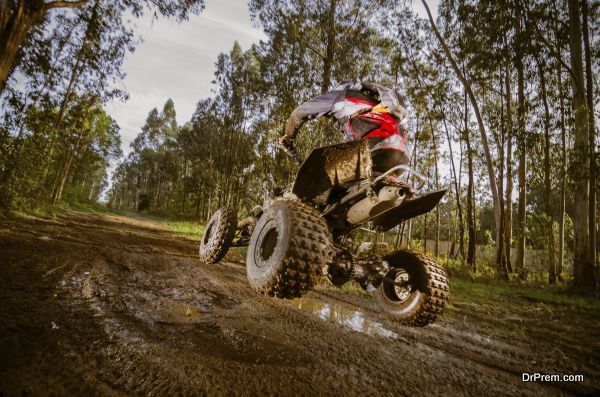Driving on a highway or any plain terrain is not that interesting as it is driving on rough terrains. Off-roading as we all call it is something that gives us the much-coveted adrenaline rush, which of course, a highway drive lacks in.
Setting off on ATVs and dirt bikes to distant places that are renowned for their challenging terrains might be like a dream come true for many off roaders. So far so good, but off-roading is not quite healthy from the environmental point of view and there is a dire need that we all consider this.
Environmental impacts of off-roading

Off-roading is possibly one of the most exciting and challenging adventures people look forward to. However, if you look at it keeping in mind the environs, it creates a different picture altogether. Suddenly, an exciting adventure sport starts to appear as a harmful activity that puts wildlife, vegetation and the entire environment at risk.
ORVs (Off Road Vehicle) are what you need for off-roading and unfortunately, they leave an extremely harmful impact on the environment and ecological systems. Where there are a good number of ORVs in action, that place and its environs have a higher level of pollution if you compare it to any other place.
Driving in a tough terrain often makes the fuel tanks of these vehicles leak. Fuel, antifreeze and other dangerous chemicals in it are toxic and the pollution generated by ORVs not just pollutes air, but also settles in water and in the soil. This is how they leave a detrimental effect on wildlife, soil and water in that area. It affects productivity of soil, kills soil dependant organisms, and disturbs wildlife, aquatic life, and vegetation.
How it affects wildlife?
Direct mortality

Tough terrains are what people look up to for their off-roading adventures. Such terrains are rarely found in and around cities but in the wilderness and in the untouched segments of the outskirts. They are away from the noise and disturbance of city life and are inhabited by animals that are not used to vehicles and city-like hustle and bustle. When off-roaders enter such areas, poor animals in shock come in front of the vehicles only to die.
Disturbance

As the animals living in an isolated environment are not used to the lights, horns and other such disturbances go crazy hearing and seeing vehicles and so many people. This is not just dangerous for animals but for humans as well, as animals at times attack human beings in rage.
How it affects vegetation?

Three major causes of off-roading, compaction, pollution, and trampling, put vegetation on a toss. They reduce plant cover, which in turn increases soil temperatures. Reduction in soil fertility further interferes with the nutrient cycling, and leaves a negative impact on the quality of fauna. The less the vegetation the loose the soil becomes, a process that we call as soil erosion.
When off-roading affects vegetation, a cycle starts. Wildlife that depends upon vegetation for its survival faces scarcity of food, and eventually dies. It disturbs the habitat and makes it not so ideal for their survival. Animals then start entering villages and cities, often hurting people and creating a lot of chaos. If such things will continue happening, they will put both human and wildlife existence on a toss.
All this happens because off-roading does not take place on pre-assigned roads but just about anywhere. Wherever off-roaders find a drivable rough terrain they without any second thought set out on that patch.
There have to be strict rules for off-roading, or at least greater awareness amongst enthusiasts for the betterment of the environment because environment will only protect us if we manage to protect it today.




